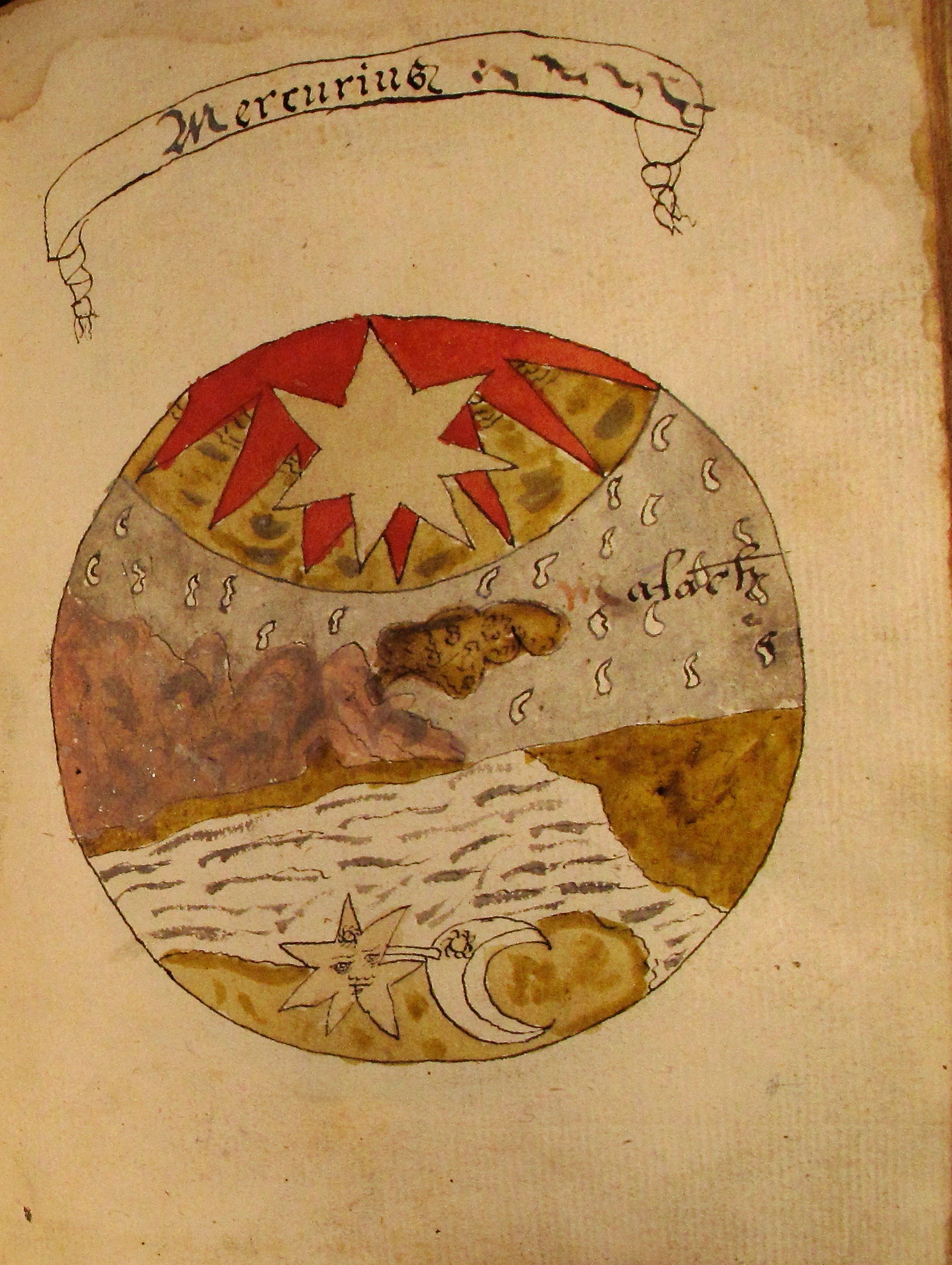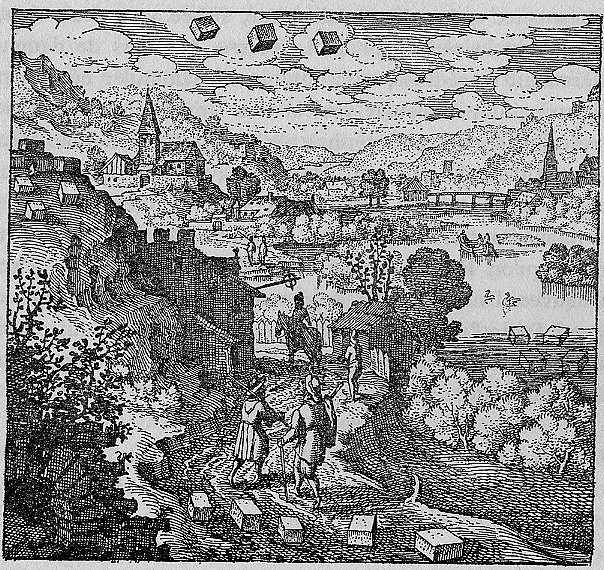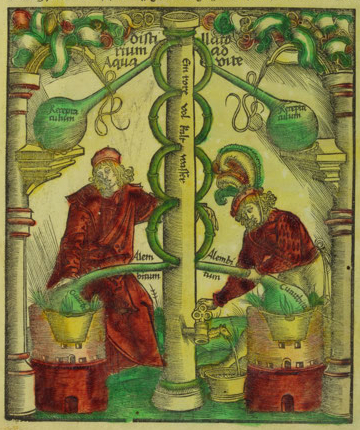http://e17arttrail.co.uk/?passed_index=21 This is a detail of part of the text on the last page of the Voynich manuscript. It appears to be a mixture of an unknown language or charm language, Middle German, and Latin, with a strange shape at the end of the last line:
buy Gabapentin 300mg uk  Is that an “o” following the word “mich”? I don’t think so, for the following reasons:
Is that an “o” following the word “mich”? I don’t think so, for the following reasons:
- It’s not in line with the rest of the text.
- It’s not shaped like any of the other “o” shapes—it’s irregular, like a rock, not like a letter and the stroke order is different.
- It’s not only shaped differently from the “o” shapes, it’s bigger.
- It’s drawn with four dots above it and a fifth to the left of the lowest. In contemporary iconography, it looks like it’s falling. I like to call it the plummeting rock and whether it’s falling or not, I consider it a drawing (like the drawings on the far left), not a part of the text.
- It’s textually out of character with all the other words, which resemble Latin and old German, even if they’re hard to interpret, and an “o” would be linguistically out of step with what immediately precedes it.
- Five dots is not an accent or diacritical mark in any language that I know. Two is usually the maximum; three is rare.
- I don’t think the dots are pointing to anything. There are many snaky lines throughout the VMS pointing to things. Dots were sometimes used in Malaysian documents to point to important paragraphs, but dots are rare as pointers in most other documents—lines, arrows and manicules are more common. When scribes fixed mistakes, the corrections were rarely written underneath or so far away, usually they were written above or after the error.
So if it’s not an “o”, what is it?
As mentioned in a previous post, it looks more like the drawings on the left than a letter of the alphabet to me. I’ve been calling it a plummeting rock for lack of a better term, but that was simply a “working title”… I wasn’t expecting to find information to confirm or deny the identity of this little graphic because it’s small and appears unrelated to the other objects on the page.
Then I came across something of interest in alchemical documents. In medieval alchemy, the substances mercury, sulphur and salt were considered important and much has been written about Mercury, in particular, since it shares its name with the legendary Mercury of the gods.
Mercury was also widely used in medical remedies and was still used to treat syphilis in the 19th century (with questionable results). Mercurialis, a medicinal plant, also shares the name.
So what could Mercury have to do with this curiosity on folio 116v? I didn’t know this until recently, but Mercury is sometimes depicted as falling from the sky:
Note that physical mercury and “celestial” mercury are not always considered the same thing and the word “mercury” was sometimes loosely given a variety of meanings.
Celestial mercury is sometimes called aqua vitae (which can also refer to aqueous ethanol) and is sometimes depicted with falling drops or falling chunks (as in the images above).
Aqua vitae, in turn, is associated with alchemical and apothecarial activities. Distillation was a common procedure for creating alcoholic beverages, but it was also used for alchemical concoctions and medicinal tinctures (in fact there may be visual references to distillation elsewhere in the VMS).
Summary
Is there a connection between falling mercury and the falling rock? I don’t know. There’s too little information to decide and there are no overt indications that the VMS is an alchemical document but it could possibly be a medical document.
I’m not even sure the text on this page will ever give up its secrets. If it’s a healing charm, as seems possible, then some of the words might be “magical” words (words not meant to be understood but which are intended to hold or transmit power by their shapes or sounds) and cannot be interpreted by anyone other than the person who created them.
If the VMS is ever translated (including the last page which may be in another hand), and contains a reference to Mercury, then perhaps a plummeting rock isn’t so far-fetched after all. In the meantime I think of it as a curiosity, something to keep us guessing.
J.K. Petersen
© Copyright 2016 J.K. Petersen, All Rights Reserved




It’s part of its charm, isn’t it 🙂
I agree that it’s not a glyph, but for now it’s impossible to say what it’s even related to.
Wonderful distillery image, by the way. Add some ugly nude women around the tubes and it can go straight in the Voynich.